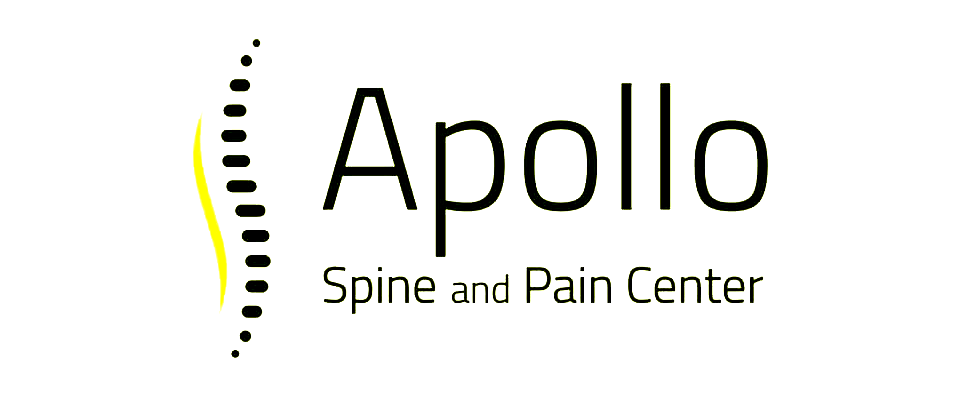Understanding Spinal Cord Stimulators for Chronic Pain Relief
Chronic pain can be incredibly challenging to cope with, often interfering with daily life and causing emotional distress. For those who have tried traditional methods of pain relief without success, there is an innovative solution that may prove effective: spinal cord stimulation.
At Apollo Spine and Pain Center, our team of pain management specialists is dedicated to helping patients find the relief they need through a variety of cutting-edge treatments, including spinal cord stimulators.
Spinal cord stimulation is a relatively non-invasive, FDA-approved pain management treatment that has been used for decades to help individuals with various chronic pain conditions. As its name suggests, a spinal cord stimulator is a small device that provides targeted electrical stimulation to the spinal cord, interfering with pain signals sent to the brain and, in turn, reducing pain sensations.
In this article, we will delve deeper into what spinal cord stimulators are, their advantages, and how they can benefit those suffering from chronic pain conditions.
The spinal cord stimulator consists of a small, implantable pulse generator (IPG) and thin electrical leads that transmit stimulation to the spinal cord. The IPG, which generates the electrical pulses, is placed under the skin, typically in the lower back or buttock area, while the leads are threaded through the epidural space of the spine.
Once implanted, the spinal cord stimulator delivers gentle electrical impulses to the spinal cord, altering the pain signals before they reach the brain.
Spinal cord stimulators have been used to treat chronic pain conditions such as failed back surgery syndrome, peripheral neuropathy, complex regional pain syndrome, and many others. As a versatile and minimally invasive option, this treatment can be particularly helpful for patients who have sought alleviation from their pain through traditional methods, such as medication or physical therapy, without success.
At Apollo Spine and Pain Center, our dedicated team of professionals is committed to helping patients navigate the process of determining whether spinal cord stimulation is the right choice for their unique needs.
How Spinal Cord Stimulation Works
To fully appreciate the potential benefits of spinal cord stimulation, it is essential to understand how the treatment process functions. Spinal cord stimulation involves masking pain signals before they reach the brain by emitting a steady, low-voltage electrical current. This electrical current is applied directly to the spinal cord through a series of thin, insulated wires called leads, which are connected to the implantable pulse generator (IPG).
Upon activating the device, patients typically experience a tingling sensation known as paresthesia, which replaces the painful sensations. Studies have shown that the electrical stimulation interferes with the transmission of pain signals, effectively reducing the patient's perception of pain. The level of stimulation can be adjusted to best suit each individual's needs, making spinal cord stimulation a highly customizable pain treatment option.
The Implantation Process
The process of implanting a spinal cord stimulator consists of several steps, typically spanning across two separate procedures:
- Trial Period: Prior to the full implantation, patients undergo a trial period to determine the effectiveness of spinal cord stimulation in alleviating their pain. Temporary leads are placed in the epidural space and connected to an external IPG, which is worn on a belt. This trial period usually lasts about one week, allowing physicians to evaluate the patient's pain relief and response to the stimulation.
- Implantation Surgery: If the trial period is successful, the patient will proceed with the full implantation. During this procedure, the patient receives sedation and local anesthesia. Using fluoroscopy (live X-ray) or ultrasound guidance, the physician inserts the IPG under the skin, typically near the lower back or buttock area, while the leads are connected to the IPG and carefully positioned within the epidural space.
- Post-Operative Care: After implantation, patients typically return home the same day and are advised to take it easy for a few days. The incision will need to be kept clean and dry, and strenuous activities should be avoided for several weeks to allow the body to heal properly.
Benefits of Spinal Cord Stimulators for Chronic Pain Relief
Spinal cord stimulation offers a variety of benefits for individuals suffering from chronic pain, including:
- Minimally Invasive: The implantation process is relatively minor and involves only small incisions, making it a less invasive option compared to more extensive surgeries like spinal fusion.
- Reversible: Spinal cord stimulators can be removed if they are not effective or if the patient no longer requires the treatment, making the process entirely reversible.
- Customizable: The level of stimulation can be adjusted to suit each patient's comfort and changing pain levels, providing tailored relief.
- Reduced Reliance on Pain Medications: Many patients experience a significant reduction in their need for pain medications, which can minimize side effects and complications associated with long-term medication use.
Potential Risks and Considerations
Like all medical procedures, spinal cord stimulation carries some risks and potential complications, including:
- Infection: While rare, there is always a risk of infection at the implant site. Proper surgical technique and post-operative care can help minimize this risk.
- Discomfort at the IPG site: Some patients may experience discomfort or irritation at the IPG implant site, but this typically resolves over time.
- Lead Migration: In some cases, the leads may shift from their original position, which may require repositioning or additional procedures to correct.
- Insufficient Pain Relief: Although many patients experience positive results with spinal cord stimulation, it is essential to remember that individual outcomes can vary, and some patients may not achieve the desired level of pain relief.
Conclusion
Spinal cord stimulators offer a promising and minimally invasive treatment option for individuals suffering from chronic pain who have exhausted traditional pain management methods. By delivering targeted electrical stimulation directly to the spinal cord, this innovative approach can potentially improve the quality of life for countless patients.
If you or someone you know is struggling with chronic pain, it may be worthwhile to discuss spinal cord stimulation with a qualified healthcare professional, such as the expert team at Apollo Spine and Pain Center. With their compassionate guidance and vast expertise, they can help you determine if this treatment option is right for your unique circumstances and assist you in your journey toward lasting pain relief.
Are you suffering from chronic pain in Cumming, GA? Don't let it control your life any longer! At Apollo Spine and Pain Center, our team specializes in pain management and we are here to help you. As the American Academy of Pain Medicine reports, chronic pain affects more Americans than diabetes, heart disease, and cancer combined. That's why we're dedicated to helping patients like you regain pain-free lives. Contact us today to learn more about our pain management services and start your journey to a better, pain-free life. Choose Apollo Spine and Pain Center as your partner in
pain management in Cumming, GA.












